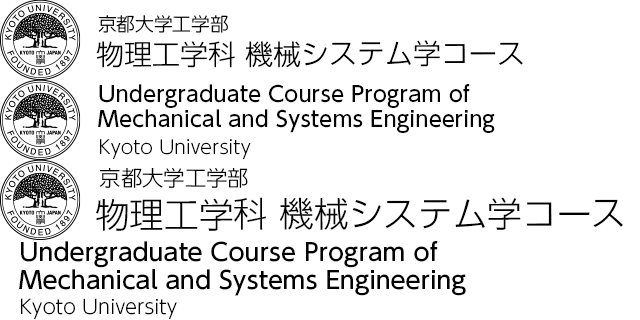Mechanical Engineering Exercise 1
The "Exercise of Mechanical Design 1," one of the unique subjects of the Mechanical System Sciecne Course, is explained here in detail. The following is the example given for the year 2007.Written by: Motofumi Suzuki, Toshiyuki Tsuchiya
"Exercise of Mechanical Design 1," a program for third year students, is introduced here.
The aim of this program is not only to teach drawing or CAD operation techniques but also to have students experience practical design activities taking place in companies and understand that engineers in the real world need to have a wide range of knowledge in advance. To achieve this, we invite people from companies outside of this university as instructors, who teach classes in cooperation with our faculty members, which is a rare situation among universities nationwide.
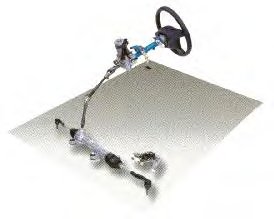 For the year 2007, the following three companies assisted the program.
For the year 2007, the following three companies assisted the program.
Group A ; Kobelco Construction Machinery Co., Ltd.
Group B ; Daihatsu Motor Co., Ltd.
Group C ; JTEKT Corporation
For about a month after the course starts in April, our faculty members teach basic drawing and CAD operation techniques. Classes by outside instructors start in May.
Here is the class program of Group C. Group C's theme was an electric power steering system for automobiles. The following is the introduction of the class by the off-campus instructor.
![]()
![]()
![]()
Group C's curriculum was as follows.
1.Experiencing assembly/disassembly of steering parts
Through hands-on experience and seeing the structure of the auto steering parts, of which students had no previous background knowledge, students became interested in the mechanical components.
2.Visit to production site (tour of a steering parts production plant)
By hearing directly of the hardships and ideas of the production site personnel where the designed products are actually manufactured, students could clearly understand the responsibility and roles of the design process, taking into consideration the following processes.
3.Operating a virtual design office by group
Students seemed to be at a loss at first, since they had no experience of spontaneous problem solving. But as the class continued, and through group discussions and design examinations, they became increasingly motivated to actively seek solutions to problems.
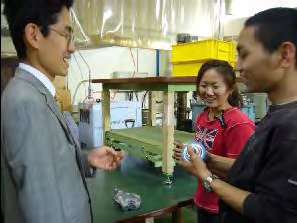
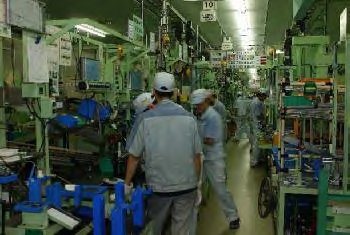
4. Group discussion (discovering ideas through brainstorming, etc.)
It is difficult to convey your thoughts to others through a qualitative approach. Here, students learn that quantitative expression is important to understand others' opinions and achieve better output.5. Presentation and design review, in view of customers
Students experience the difficulty of summarizing their group's opinion and making it understood by others, while competing with other groups. Through this experience, they improve the quality of their presentation. The presentations sometimes result in achievements far exceeding the instructors' expectations. Each class, students' questions and answers became more and more sophisticated and the technical quality of their discussions became higher and higher.6. Element design/drawing exercise based on system performance
By experiencing a part of the actual design process, students understand that the system performance and element performance are closely related.

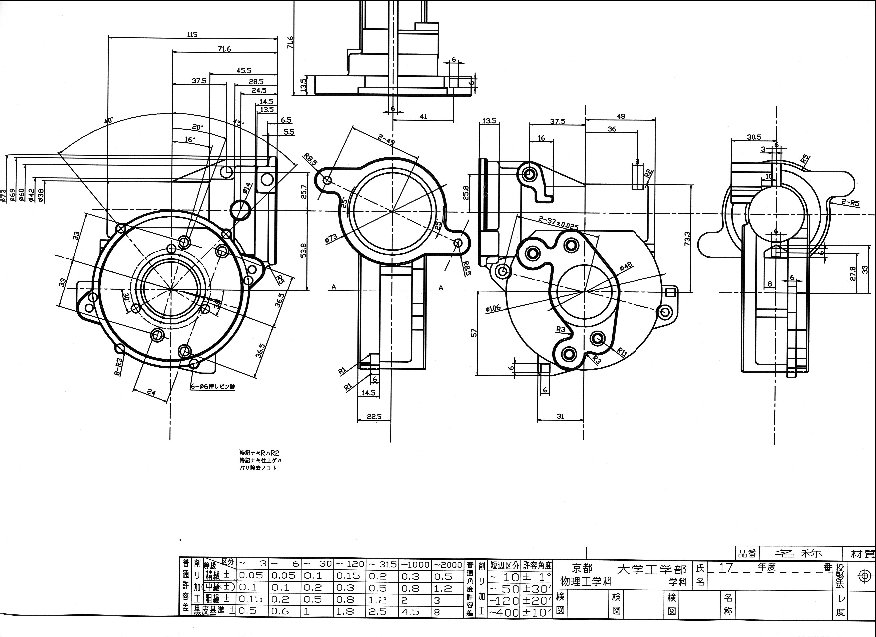
Despite the concerns of instructors, students worked hard on their tasks until late at night and on holidays, especially before presentation or submission deadlines, demonstrating that they can show magnificent abilities once they are motivated by interest.
Comment from students
A questionnaire survey conducted during the class period indicates that the targets and aims of this program were mostly achieved. However, there were some negative opinions including that more time should be spent teaching drawing and CAD operation techniques, and that this course puts a large burden on the third year students who are busy with experiments.
<Examples>
- It was hard, but it was a good experience.
- Looking back, it was quite a hard class, but worth trying.
- It was good that I could develop a clear image of what I am going to do in a company in the future.
Comments from instructors
Though the period was as short as three months, I could feel that students learned the importance of having a wide range of basic knowledge. At the same time, I reaffirmed the importance of preparatory education for future engineers. Moreover, hearing students' creative daily life-related ideas and "good questions" that were useful for both themselves and others, I could feel satisfaction and a sense of achievement. I still keep in touch with the students in this class, receiving good stimulations from them.
During the recent Tokyo Motor Show, we displayed the "storable steering system," which is related to one of the students' presentations shown in a previous page, demonstrating the program's connection to the real-world society.
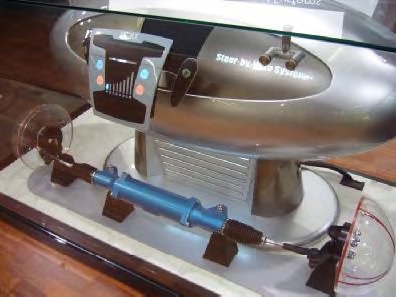
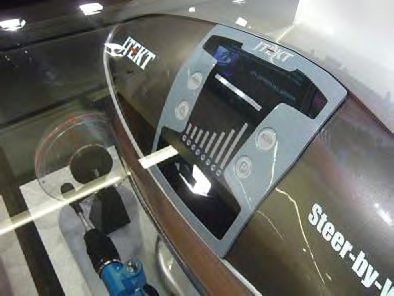
Written by: Shiro Nakano and Sadahiro Kawahara (JTEKT Corp.)
![]()
![]()
![]()
As explained above, the "Mechanical Design Exercise" program offers students who are going to be future members of society a good opportunity to experience actual corporate activities. We will continue to make efforts to improve the quality of the program, in cooperation with various company people.
(Kyoto University Mechanical Engineering Alumni Letter No. 75)
